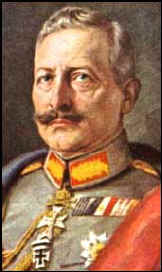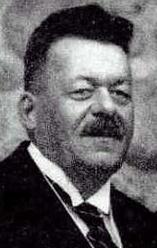Tamurin

| |
| Flag of Tamurin | |
| Motto: United we stand! | |
| link | |
| Region | Europa |
|---|---|
| Capital | Alaghon |
| Official Language(s) | English, German |
| Leader | President Wolfgang Leonhardt, progressive conservative |
| Population | ca. 3.5 billion |
| Currency | Credit |
| NS Sunset XML | |
GENERAL INFORMATION
The United Republic of Tamurin is a medium-sized nation in the oriental east of Europa, located on a half-island. Its landscape is dominated by hills and forests and its climate is oceanic mediterranian. Tamurin has only one short land border in the north, but a very long coastline.
Tamurin consists of three regions: Tamurin in the centre, Ormpetarr in the south and Ormath in the north. Ormath was the former capital of Imperial Tamurin. Tamurin has also two island departments, Helgoland (north) and Fehmarn (south).
The nation has a presidential democracy, meaning that the President and the Parliament are both directly elected by the people. Tamurin is decentralized and several local parliaments are dealing with local issues. The national parliament is only concerned with national issues.
History
The Empire of Tamurin, ruled by the League of the Lords, was founded in 1871 after several centuries of division. In that time, many tamurinian nations struggled for supremecy in the Tamurin lands. In 1871, the most powerful Lord, George Menelassar, united Tamurin, by force and by politics. He founded the “League of the Lords”, which was mostly called “Imperial League”. The League was the upper house of the parliament, while the lower house was democratically elected. Actions of the lower house could be overruled by the upper house, which happened very often.

Emperor Menelassar I., around 1880
Emperor Menelassar I. died in 1888. His rule was harsh and strong, and he made a powerful militaristic nation out of Tamurin. His son, James Menelassar II., was more liberal and he supported the lower house, especially the republican party. He created the position of prime-minister, who led the government (before that, the Emperor did that himself; he now only controlled the prime-minister, made the foreign policy and controlled the armed forces).
Emperor Menelassar II. resigned in 1896. He was under very hard pressure by the League to stop the democratic improvements and to return to the imperial system. When he refused, they ended their support for him. After one month of political crisis, he resigned and his brother, an imperial hardliner, Jacob Menelassar III., became emperor.

Jacob Menelassar III., around 1900
Menelassar II. left the the upper house and joined the republican party. He became a great leader of them, while his brother tried to undo the democratic changes. He used methods of totalitarian systems which caused widespread opposition, even in the ranks of the Lords and the armed forces.

James Menelassar II.
From 1903-1911 both brothers fought during the First Tamurin Civil War against each other. The war ended with the almost total destruction of the Empire and its supporters. From 1911-2004, the Republic of Tamurin was a more or less stable nation.
From 1912-1937 various social-democratic parties governed the nation and tried to establish a variety of the socialist idea of Karl Marx. They failed and the result was devastating. The economy was down, the nation was technologically inferior and the people were very dissatisfied.
A liberal-conservative government brought the nation back to the first of Europa. From 1938-1967 they modernized the nation and made a top-level economy.
1968, the students revolted. The liberal-conservative government was still in the 30s (with its mind). Progressive parties had to succeed them.
In 2004, the Imperials returned and fought a bloody rebellion against the Republicans. For three months it was not clear what will happen and who will win. But with the help of Ekainak, Byzantinum Nova, Orioni and several others, the Republic survived. Its former president, William Granger, died, but his successor, President Hartman, led the Republic to victory. President Hartman, an independent politician and former mayor of Alaghon, is still serving as President in his first term.
Another important citizen of Tamurin is Field Marshall von Steinburg, Chief of Staff of the Military. He fought bravely during the Second Civil War. His great ancestor, General von Steinburg, led the Republican forces during the First Civil War.

Protecting Tamurin against Imperial Forces
Until july 31st 2005, a great coalition of conservatives and socialists was dominating the parliament. The new Vice-President, Martin Sumner, was a member of the isolationist movement which tried to reduce ties to the international community. The continued growth of the movement made day-to-day politics very difficult.
On July 31st, 2005, the parliament which was dissolved earlier that month by President Hartman, was re-elected. Former Vice-President Sumner (who was fired) led the new isolationist movement and made it the strongest party. But he failed to achieve the absolute majority and a possible coalition with the nationalists failed. President Hartman is now working with a minority-alliance in the parliament.
Shortly after that, President Hartman died due to a heart attack. In the following election, Martin Sumner was elected President. The isolationists formed an alliance with the socialists and were controlling the office of the president and the parliament. Tamurin cooled down its relations to other nations.
Nearly a year after that the isolanist government broke down when the party fell apart. The isolationist movement had never too much common ground and after Tamurin lived for itself conflicts broke out. After Martin Sumner resigned in March 2006, Chief of Staff and Minister of Defense Field Marshall von Steinburg took over the government, dissolved the Parliament and set up a provisional government until re-elections were held on June 1st.

Despite all the worries, Tamurinians really enjoy festivals, parties and joyful events
In these elections a progressive alliance consisting of Progessive Conservatives, Social-Democrats and Socialists won the elections, with the Social-Democrats taking over the presidency (Jürgen Axmann), the Progressive Conservatives taking over the Prime Ministry (Hermann Leonhardt) and daughter of former President Hartman Claudia Hartman becoming "Super Minister" for Defense, Foreign Relations and Technology.
During the Conference for Security and Cooperation in Europa (CSCE) a group of terrorists linked to the INELF (Imperial North-East Liberation Front) seized control of the CSCE-building and killed several delegation members including President Axmann. Minister Hartman was able to escape.
After a terrible rescue operation in which nerve gas was used (which killed terrorists, security guards and hostages), the tamurinian security forces were able to re-take the building, although several mistakes were done during the mission (e.g. friendly fire on hostages). The whole conference was a political desaster for the tamurinian government.
Wolfgang Leonhardt became President, Claudia Hartman prime minister. Currently the INELF is gaining strength in North-East Tamurin (Ormath) and civilian groups are putting up pressure on the government because of its obvious lack of skill.
Tamurin continues the policy of "Armed Neutrality", but also tries to close ties between the oriental nations in eastern Europa. Tamurin recently co-founded the oriental alliance "EOS".
Geography

Pictures & more information

The "House of Unity", built after the first civil war.

The OG-2 "Thor", Tamurin's aircraft-launched space "workhorse".
The current parliament consists of the following parties:
Traditional: 12,3 %, Progressive: 22,4 %, Liberal: 21,1 % (Opposition Leader: Josef Zwick), Social-democrats: 20,5 %, Socialists: 7,2 %, Union of the North: 13,4 %, Green: 2,2 %, Others: 0,9 %
The President
Jürgen Axmann: 55 years old, member of the social-democrats. He is neither Orientalist nor Continentalist and would like to be Tamurin the "gateway" for the continent to reach the Orient and vice-versa. Internal, he is a left-leaning liberal, trusting in the free market, but trying to secure it with social policies and extensive welfare programs.
The Prime Minister
Hermann Leonhardt: 51 years old, member of the progressive party. He is an "Orientalist", meaning that his political agenda is the oriental coastal region. He prefers ties to the regional nations and wishes to establish a political union of the eastern coast. In terms of internal politics he stands between liberals and conservatives. His agenda is a "conservatism with heart".
The parties:
- The Traditional party ("old conservatives"): Right-wing party, democrats, free market, "party of the rich"
- The Progressive party ("new conservatives"): Right-Center-party, democrats, free market, "party of the middle people"
- The Liberals: Center party, democrats, extreme free market, "party of the economy"
- The social-democrats Center-Left-party, democrats, reduced free market, "party of the small people"
- The socialists: Left party, democrats and soviet democrats, no free market, self-proclaimed worker's party
- The Union of the North: Far right-wing, anti-democrats, free market, old imperialists and fascists
- The Greens: Center, democrats, ecologial free market, "nature party"
